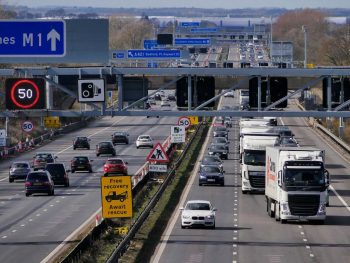Highway Code advice on motorway driving ‘long overdue’, says GEM
Updates to the Highway Code to give road users a better understanding of how motorways operate are “long overdue”, according to road safety and breakdown cover specialist GEM Motoring Assist.

The updated guidance for the Highway Code will help road users better understand how motorways and high-speed roads operate
Last month saw Highways England announce that it’s drafted updated guidance for the Highway Code with the Driver and Vehicle Standards Agency (DVSA) to help road users better understand how motorways and high-speed roads operate.
The update will include clearer advice on where to stop in an emergency and the importance of not driving in a lane closed by a ‘Red X’. It will also advise on the use of variable speed limits to manage congestion and give updated guidance on key factors that contribute to safety-related incidents, including driving while tired, unroadworthy vehicles, safe towing, tailgating and driving in roadworks.
The amendments follow input from more than 3,200 people and organisations to a consultation on the guidance and are expected to become part of the Highway Code later this year.
GEM chief executive Neil Worth said the additional advice was long overdue.
“Traffic management procedures – including use of the hard shoulder for traffic – have been in use since 2006.
“So we welcome the announcement that more detailed and specific advice is to be included in the Highway Code, as we know this has the potential to assist every road user in reducing the risks they face – and the risks they may pose to others – on a motorway journey.
“We urge drivers and riders to ensure they know the rules and signs relating to smart motorways. Understanding how a smart motorway works can help sure you don’t receive an unwanted traffic ticket. Knowing what to do if you are unfortunate enough to experience a breakdown in a stretch of smart motorway could well prove a lifesaver.”
GEM also said there are a number of areas where the risks can be particularly high on motorways, including insufficient time and space between vehicles travelling at high speed, distracted drivers, those using poor lane discipline, and drivers making last-minute decisions.
Neil Worth concluded: “By acknowledging these risks, you are taking a big step toward making a motorway journey safer.
“Also, if you familiarise yourself with the rules and signs that apply to smart motorways, you are much more likely to stay safe and avoid a ticket for speeding or using a closed lane.
“Knowing what to do if you break down in a stretch of smart motorway is a big help for road safety. Then you will know what to do if you experience a breakdown yourself, and will also understand what’s happening if another vehicle breaks down.”
GEM Motoring AssistHighway Code


















Andy Cooke05. Jul, 2021
I am finding all these reports very informatative and am enjoying all the new tech’ that is around.
And, whilst many roads are reducing their speed limits due to ‘pollution kills’ reduce your speed, how does this effect pure EV’s that emit no emissions.
By the logic that lower speeds help with air quality of Petrol and Diesel vehicles, would EV’s be allowed to drive at the old normal speeds without prosecution for speeding?
I think that this raises a good question.
Thank you,